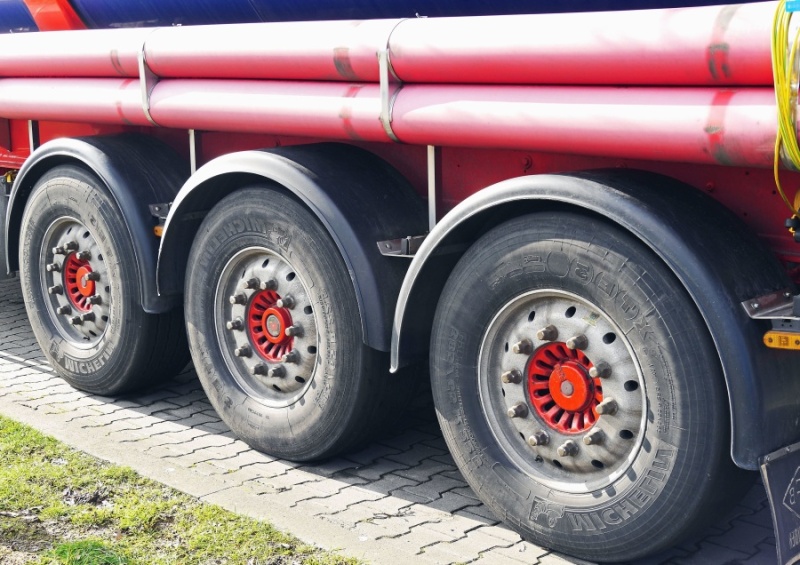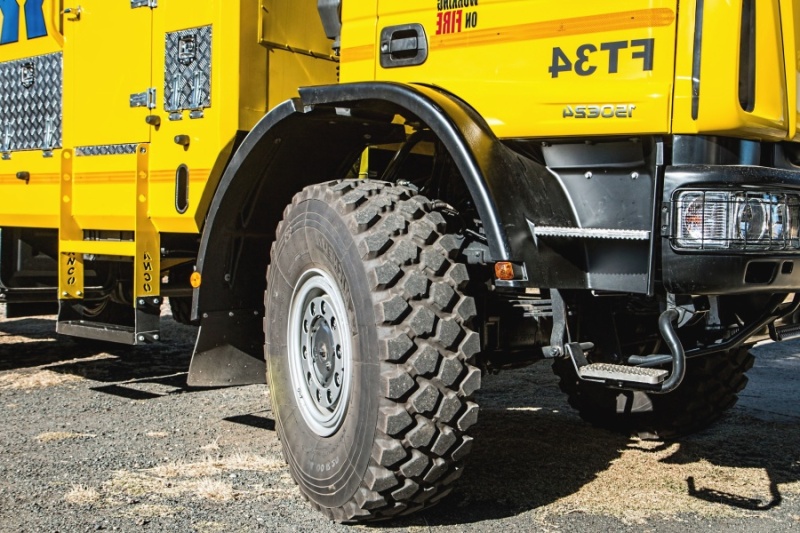Mechanical tyre blowouts involve the condition of the materials (tyre, rim) and the quality of the assembly. Although less spectacular than an explosion, the energy released during a burst can cause significant injuries if people are directly in the path of the debris. Four events can lead to a mechanically-induced tyre blowout:
a. Inflation of the tyre at excessive pressure
Possible causes:
- Incorrectly adjusted compressor pressure;
- pressure gauge or valve problems;
- incorrect mounting and deliberate over-pressurisation during mounting to glue the tyre to the rim.
b. Zipper failure
A design flaw, overload or impact can cause the tyre carcass to weaken, break or rupture. The result can be a large air leak, the projection of tyre fragments and a sudden drop in pressure at the point of failure, sometimes accompanied by a mark resembling a torn or unzipped fabric.
Possible causes:
- deterioration of the casing exposing the tyre’s inner liner or spindle to air or moisture contamination;
- the mechanical impact that has damaged the tyre structure;
- driving with under-pressurised tyres at less than 80% of the recommended pressure;
- driving with over-pressurised tyres;
- overloading;
- loss of mechanical properties due to heat, pyrolysis or thermo-oxidation;
- severe carcass wear;
- defective casing weave design.
c. Dejection
Dejection occurs when the tyre accidentally and suddenly comes off its rim with a violent evacuation of the air or other gases contained in the tyre. Possible causes:
- mechanical impact, more or less damaging, on the rim or the tyre;
- non-standard wear of the rim (flange);
- deformation of the rim or one of its components as a result of overheating;
- incorrect initial mounting of the tyre n Incompatibility of rim parts (multi-piece rim);
- tyre size not conforming to rim size or other non-conformities between rim and tyre.
In such an event, you can call Star Truck Tyres for tyre repair.
d. A tyre in poor condition or with a structural weakness
Whether new or worn, a tyre may have a more or less noticeable structural defect and may not withstand normal inflation pressure.
Bursting or Explosion of Tyres as a Result of Overheating

A rise in temperature inside the tyre causes an increase in tyre pressure. As long as the temperature rises and the tyre hasn’t failed or blown out, this increase in pressure will continue. In addition, above a certain temperature, various chemical reactions can occur in the tyre under heat, including thermo-oxidation and pyrolysis. Pyrolysis is the consequence of a material’s irreversible chemical degradation caused solely by heat. In the case of a tyre, rubber degradation occurs:
- when the temperature within the tyre hits 185°C;
- in the absence of oxygen (inflating with nitrogen does not eliminate the pyrolysis phenomenon);
- in a few seconds.
Moreover, this phenomenon leads to a degradation of the chemical and mechanical properties of the tyre. This degradation can occur gradually, and its effects could be cumulative if several overheating events have occurred. The same indications prevail in the case of thermo-oxidation. However, this phenomenon, which occurs with oxygen, cannot happen if the tyres are inflated with nitrogen. Pyrolysis and thermo-oxidation produce gases that induce a rise in pressure in the tyre, which can therefore cause an explosion. The following three simultaneously critical conditions can result in a blast producing a rapid increase in pressure:
- sufficient concentration of flammable gas;
- temperature and pressure equal to or higher than the auto-ignition temperature and pressure of the gases;
- oxygen concentration greater than 5.5%
At the moment of explosion, the pressure can reach 1000 psi or more by creating shock waves.
The consequences
In the event of a burst or explosion, the violent blast or projection of fragments can cause severe and even fatal injuries to anyone nearby.
There are few, if any, reliable, easily measurable or even apparent objective indicators of the onset or extent of heat-induced rubber degradation from a variety of sources, such as:
1. overheating of the brakes (complete or partial blockage, or excessive use)
2. electrical arcing (lightning, contact or proximity to high voltage lines)
3. vehicle fire
4. welding of the rim with the tyre mounted
5. welding or heating with a torch on a part near the rim with the tyre mounted
6. use of tyres under pressure
7. Using the tyres in an overloaded condition
8. Use at excessive speeds
9. very high road temperature
10. unbalanced pressure on tyres mounted on double wheels
11. rubbing of an object (e.g. body part, mudguard) on the tyre
12. Contact of tyres on a dual wheel assembly
13. all combinations of these factors transmit or generate heat in the tyre.
Yeah, we know all this sounds alarming, but indeed true! We will continue with the measures to prevent tyre bursts and explosions in our upcoming post. In the meantime, don’t forget to leave your comments below.

